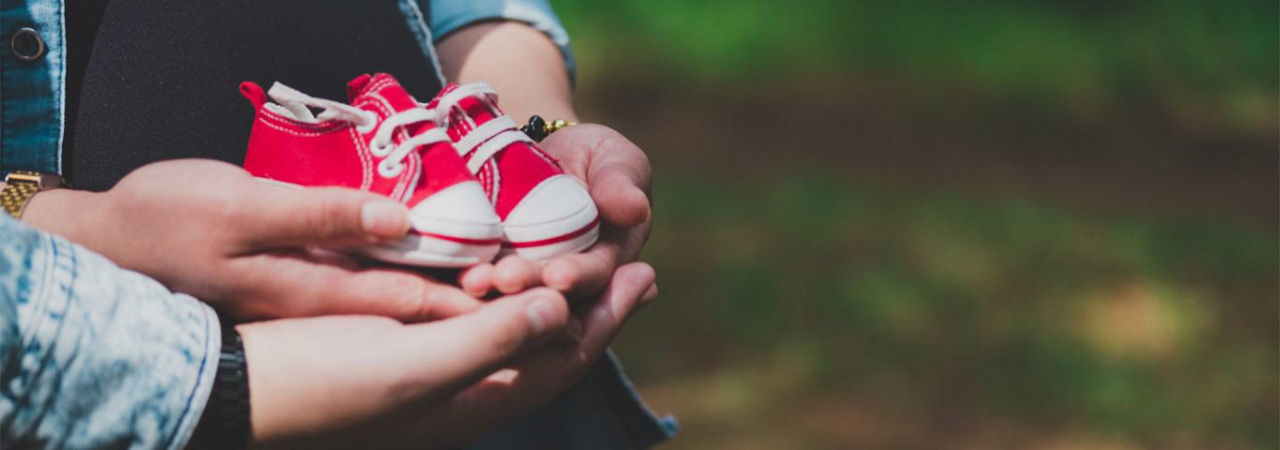Breastfeeding is the best for babies and a healthy diet / maternal nutrition is important when breastfeeding. A decision not to breastfeed can be difficult to reverse. Infant formula is suitable from birth when babies are not breastfed. It is recommended that all formula milks be used on the advice of a doctor, midwife, health visitor, public health nurse, dietitian, pharmacist, or other professional responsible for maternal and child care and the financial implications should be considered. All preparation and feeding instructions should be followed carefully as inappropriate preparation could lead to health hazards.
Tips for Easier Diaper Changes
New parents get nervous when it comes to diaper changing. It’s a skill that needs to be learned — fast! Your junior is likely ready for potty training when nearing the age of 3. While waiting for your toddler to be old enough for potty training, mums and dads need to familiarise themselves with diaper changing. Fortunately, diaper changing will soon become second nature when you have a mental checklist of the clean-up routine. Here are some basic tips to calm your child when changing diapers.
1. INFORM BEFOREHAND
Surprises create anxiety and frustration, especially when children are still playing. Tell your child what you're going to do before you start. Although your child may be too young to understand what you're saying, hearing your calm voice reassures your child and makes them feel safe. Be sure to make eye contact. It sets a positive tone and shows them they are respected. Over time, they will become familiar with the routine and the trust will be built. Additionally, take your time when changing your junior’s diaper. A rush attempt reinforces the idea in children that it’s fine to throw tantrums to get what they want. Also, improper wiping and rushed diaper changes may result in infections and diaper rashes. Therefore, take it slow and treat every diaper duty as a time to bond with your child.
2. SET UP A DIAPER CHANGING STATION
Parents need to check from time to time by smell, the weight of diaper and crying. The best way to prepare for frequent diaper changes is to set up a well-stocked changing station. Ideally, the surface should be high enough for you to change to avoid hunching over. Make sure the legs of the station are sturdy because your child is bound to squirm around. Another useful tip for efficient diaper changes is to have a storage space nearby (shelves, baskets or drawers). This is where you can store diapers, tissues, unscented wipes, diaper rash creams and snap-close bodysuits. To prevent chafing and diaper rash, change the diaper immediately when it’s soiled. At times, it is alright to change your child standing up. With the right setup and supplies, diaper duty becomes easier and safer for your child.
3. USE DISTRACTIONS
One of the ways to calm your child during a diaper change is to use musical crib mobile or soft toys as distractions. Besides that, keep some fun objects nearby or hang a musical mobile over the changing station. Reserve them only when changing their diapers to establish the novelty.
If possible, change diapers only after mealtime. Kids do get cranky when they are hungry, making them resistant to have their diapers changed. Feed your child with Dumex Mamil Gold which contains our unique blend of prebiotics, GOS:lcFOS (9:1) sourced from chicory root and milk itself. Our no added-sucrose milk formula makes eating time stress-free and supports good gut health in your child.
4. PREPARE WASTEBASKETS SPECIFICALLY FOR DIRTY DIAPERS
For parents who opt for disposable over cloth diapers for their little ones, they need to be disposed daily and separated from other wastes. Foot pedal bins serve as a suitable place of disposal and you won’t have to worry about lifting the lid with your hands. If soiled diapers are kept too long in the house, the odour and growth of bacteria in the faecal matter can pose a health hazard to everyone. Meanwhile, busy parents who do not have time on their side may consider having a diaper pail at home. It is an odour-sealing bin which can store used diapers for a few days before it’s time to empty it. Another tip to reduce odour is by simply flushing the stool (not diaper!) into the toilet.
While changing dirty diapers, it is a good time to assess your little one’s gut health based on stool consistency. Dumex Mamil Gold contains a unique prebiotic blend of galacto-oligosaccharides (GOS) and long chain fructo-oligosacharides (lcFOS) in the ratio of 9:1 to promote the growth of good Bifidus bacteria in the gastrointestinal tract. It also promotes softer stool to which is an important sign of a healthy digestive system.
Parents can assess their child's digestive health by the type, size, colour and frequency of bowel movements. Having good digestive health is crucial for your child’s overall physical health and mood. Toddlers can go for Dumex Mamil Gold Stage 3 which is tailored for aged 1 to 3. When you child is turning 4 years old, you may gradually switch to Dumex Mamil Gold Stage 4 that caters to children aged 3 to 6. For older children, Dumex Mamil Gold Stage 5 is made for 6 years old and above. Explore our range of Dumex Mamil Gold milk formulas today!
REFERENCES:
- Patritto, L. (2013, Oct 12). Safety steps are necessary when dealing with dirty diapers. Michigan State University. https://www.canr.msu.edu/news/safety_steps_are_necessary_when_dealing_with_dirty_diapers.
- Huang, T.T, et al. (2019). Current Understanding of Gut Microbiota in Mood Disorders: An Update of Human Studies. Zhejiang University School of Medicine. Retrieved on 30 June, 2020 from https://www.ncbi.nlm.nih.gov/pmc/articles/PMC6389720/
- Scholtens, P. A., Goossens, D. A., & Staiano, A. (2014). World Journal of Gastroenterology, 20(37), 13446–13452.


Ask Our Careline
Whatever’s on your mind, we’re here to help



